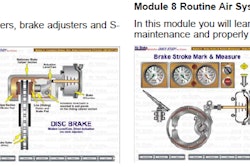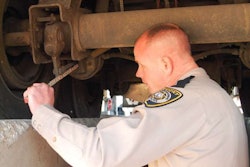Automatic brake adjusters don’t need a lot of attention, but they certainly don’t fall in the set-it-and-forget-it category. Periodic inspection and lubrication are critical to optimal performance.
When the brake is applied, a rod pushes out on the slack adjuster, which then turns the S-cam to force the brake shoes apart to apply friction. The automatic slack adjuster (ASA) is designed to compensate for wear in the brake lining and brake drum to maintain a constant stroke of the actuator. Inadequate stroke can diminish braking power.
“Dimensions and the geometry have to be maintained throughout the life of the pad in order to keep the performance and efficiency of the brake up,” says Joe Kay, director of brake engineering for Meritor. “That’s where the automatic slack adjuster comes into play.”
LUBE REGULARLY. ASAs often are not greased regularly during scheduled maintenance and inspections, says Keith McComsey, director of marketing and customer solutions for wheel ends at Bendix Spicer Foundation Brake.
“Slack adjusters that don’t perform properly through lack of lubrication can have a direct impact on both safety and regulatory compliance,” he says.
Properly lubricating the ASA purges the old grease, water and any contaminants from the adjuster and protects its internal components from wear.
McComsey says lubrication with an NGLI grade-2 lubricant at least every 30,000 miles should take less than a minute per adjuster, “but you can also make things less complicated by greasing the ASAs every time you do a preventive maintenance inspection.”








